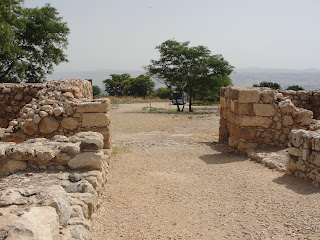 Here is one that I updated from the archives. Hope you enjoy as we enter this festive season . . .
Here is one that I updated from the archives. Hope you enjoy as we enter this festive season . . . Once again, we have arrived at the second Wednesday of the month, which can only mean it is time for another episode of Stupid Song Lyrics. In honor of the Christmas season, I thought it appropriate to delve into some of the more questionable lyrics from some of our holiday favorites. So, without any further ado . . .
1. “I saw three ships come sailing in, on Christmas Day, on Christmas Day. I saw three ships come sailing in, on Christmas Day in the morning.” Subsequent verses: “And what was in those ships, all three?”, “The virgin Mary and Christ were there”, and “O, they sailed to Bethlehem, On Christmas Day, on Christmas Day . . .”
I guess I’m missing something, because I don’t remember the biblical passage that describes Mary and the baby Jesus on a ship—a ship in a flotilla of three vessels—sailing into the land-locked town of Bethlehem on Christmas morning. Is this figurative or metaphorical language? Is the writer of this song using one of those “paraphrase” Bibles? Or are these just . . . stupid song lyrics?
2. From “Here Comes Santa Claus”: Santa knows that we’re God’s children, that makes everything right.
Talk about your blanket statements. That makes everything right? Everything? You know, there are a lot of terrible things going on out there in the world today—murder, kidnapping, terrorism, starvation, violence and tragedy of all kinds. But you’re telling me that as long as we all realize that Santa (a fictitious character) knows that we are all God’s children (or as Bing Crosby sings, “we’re God’s chillin’”), well, then, that makes everything right. You’re okay. I’m okay. The world is okay. It’s all good.
3. In Little Saint Nick, the Beach Boys continually harmonize, “Christmas comes this time each year.”
Except for that one year when it came in March.
4. “Everyone’s dancing merrily, in a new old fashioned way.” Rockin’ Around the Christmas Tree
Don’t let this one confuse you. When you are rocking around the Christmas tree (which all of us do, right?), dance in a new old fashioned way, not in the old old fashioned way. You see, at one point, there was only one fashion. Then, a new fashion came along so we had to distinguish between the old fashioned way and the new fashioned way. But as is always the case, eventually, an even newer fashion came along--this was dubbed the new new fashioned way. The problem is, when people would refer back to what had gone before, it was confusing. People would ask, "Are you talking about the old old fashioned way or the new old fashioned way?" This song exhorts us to dance in the new old fashioned way. Thank you for letting me clear this up.
5. The Little Drummer Boy states, “The ox and lamb kept time, pa rum pum pum pum.”
Really? A couple of animals were keeping time? Now how exactly did they do that? Were they tapping their feet on the ground? Clapping their hoofs together? Scratchin’ on a first century mix-master machine? Seems kind of unrealistic. Besides, in any band, the drummer is the one who keeps time, so why would the little drummer boy need someone (or something) else to keep time for him in the first place?
6. And finally, I want you all to enjoy your Christmas to the utmost. Don’t hold back from having the most splendid holiday ever. Celebrate with gusto! In other words, I want you to Jingle ALL the way! Don’t jingle half the way. Don’t jingle a little bit and then give up. Don’t talk a good game and then stop jingling on December 15th. Don’t make excuses. Jingle ALL the way! You can do it!





















































